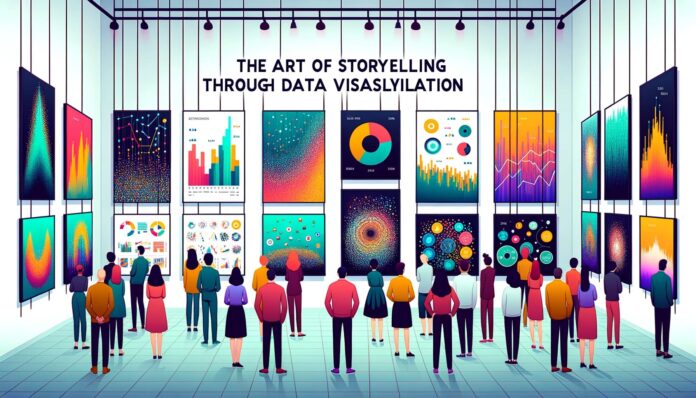Introduction
In the era of big data, the ability to transform data into insightful narratives is a coveted skill. Data visualization emerges as a powerful tool in this endeavor, enabling the conveyance of complex data insights through engaging visual stories. This article explores the art of storytelling through data visualization, showcasing its potential in enhancing comprehension and driving actionable insights.
1. The Significance of Data Visualization
Data visualization transcends the barriers of complex datasets, providing a clear and intuitive medium to communicate data insights. It’s not merely about presenting data; it’s about telling a compelling story that resonates with the audience.
2. Elements of Storytelling in Data Visualization
2.1. Context
Providing context is crucial to ensure the audience grasps the core message. Establishing a clear setting, background, and purpose sets the stage for the narrative.
2.2. Logical Flow
A coherent flow of information, akin to a well-structured storyline, guides the audience through the data journey seamlessly.
2.3. Engaging Visuals
Utilizing engaging visuals like charts, graphs, and infographics captivates the audience’s attention and enhances comprehension.
3. Tools and Techniques
Several tools like Tableau, Power BI, and programming languages like Python with libraries such as Matplotlib and Seaborn facilitate data visualization.
# Example: Creating a simple line plot using Matplotlib
import matplotlib.pyplot as plt
# Sample data
x = [1, 2, 3, 4, 5]
y = [2, 3, 5, 7, 11]
# Creating the plot
plt.plot(x, y)
# Adding title and labels
plt.title('Sample Line Plot')
plt.xlabel('X-axis')
plt.ylabel('Y-axis')
# Displaying the plot
plt.show()4. Best Practices
4.1. Simplicity
Maintain simplicity to avoid overwhelming the audience with too much information.
4.2. Consistency
Consistency in design elements like color, font, and layout enhances the visual appeal and readability.
4.3. Interactive Visualizations
Interactive visualizations enable the audience to explore data at their pace, fostering a deeper understanding.
5. Real-world Examples
Companies like Airbnb and Netflix leverage data visualization to communicate insights, drive decisions, and share stories with their stakeholders.
6. Conclusion
Mastering the art of storytelling through data visualization is essential in the modern data-driven landscape. It not only enhances comprehension but fosters an environment where data becomes a compelling narrative, propelling informed decision-making.
